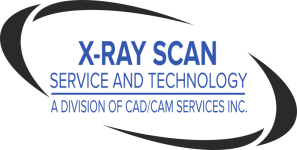X-Ray Film Scanners and Digitizers, X-Ray Film Scanning Services and Software
Radiography Image Management in the Digital Age
posted Jul-10-2015Radiography is an imaging technology that uses electromagnetic radiation (x-rays) to view the internal structure of a non-uniformly composed and opaque object. Radiology is used healthcare to “see” inside an animal or a human body, as well as in industry to inspect materials, equipment and construction for hidden flaws. The role of the radiographer has changed dramatically as a result of more advanced equipment. If the object being examined I living, it falls under the heading of “medical” imaging; if the object being examined is not living, then it falls under the heading of “industrial” imaging. Industrial imaging also referred to as non-destructive testing, or NDT.
![]()
While the first experiments with digital radiography were described in 1977, by Kruger et al and digital radiography was first introduced into clinical use in 1980, for the most part, up until twenty years ago, most radiography images were captured on film. However in the past twenty years, strides have been made, primarily in medical imaging, that have caused the transition to and the conversion of most medical radiographic imaging to digital.
Medical Led the Way, Industrial Will Follow
Today, industrial radiography stands on the brink of digitalization, just as medical did twenty years ago. It is predicted that the transition from film to digital will occur far more rapidly in industrial radiography than it did in medical. This is due, at least in part, to the fact that digital radiographic technology has already been developed and needs only to be accepted by the industrial community. Bottom line concerns and profit motive will likely be great motivators in rapid acceptance of digital technology, due to its greater accuracy and stability.
Radiograph Film Digitization Technology
The U.S.A. National Archives lists X-Ray film as one of the most fragile documents to store. Because of their properties, X-Ray Films must be preserved under strict temperature and humidity controls. Some X-Rays are Nitrate based which means they are extremely flammable. The introduction of radiograph film digitization into aerospace, manufacturing, construction, industrial projects and plants ensures that these organizations have electronic records in permanent archives.
An Integral Requirement for Going Digital
Film digitizing must be considered an integral part of the transition to digital imaging. Film digitizing should not be relegated to a secondary position in the process. There is a role for both digitizers and for cost-effective conversion services to help facilities solve the ongoing “film problem” and ensure that radiographers remain productive both during and after implementing a digital imaging system.
High-quality, affordable, and fast film digitizing solutions, such as the VIDAR NDT Pro and the Microtek MII-900 Plus are helping facilities worldwide realize the full benefits of digital imaging and DICONDE.
In addition, some outsource services, can also offer cloud-based storage, access, view and transmission of digital medical images at very affordable prices. The DICONDE Cloud is one. DICONDE Cloud can be customized to match user’s workflow requirements, thereby aiding in improving NDT efficiency.
Benefits of Going Digital for NDT
Two of the most important benefits of any transformation from analog to digital include improved efficiency and lowered costs. Digital records also eliminate the aging and image degradation often found in older films, as well as the requirement for physical storage space. Associated documents such as UT, MPI and associated reports can also be archived. With cloud based storage and access, the radiographic information is available to authorized users 24/7 from any Internet browser, especially useful in emergency situations. For more information on digital radiography, film conversion or DICONDE Cloud, contact us.

